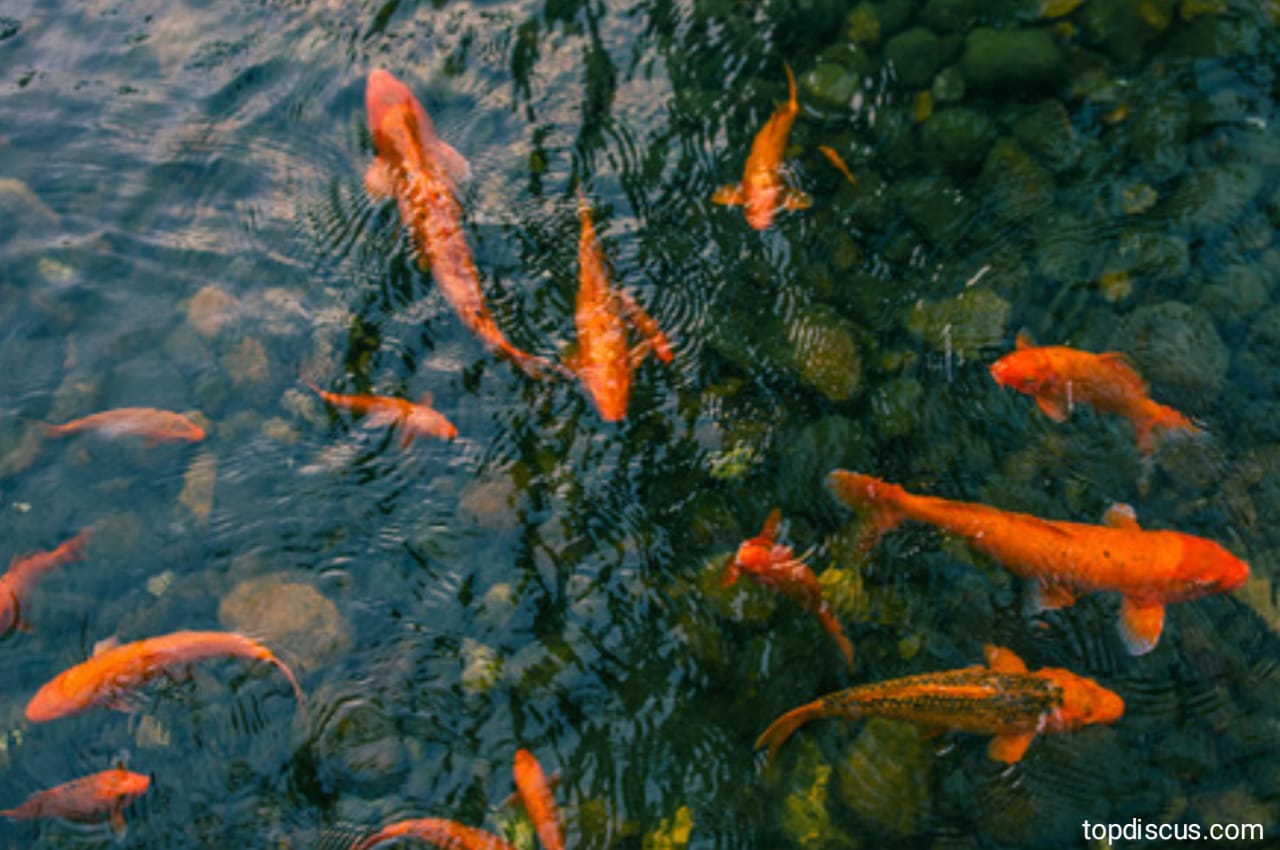Best Ideas for Home Fish Farming: In this blog post, we’ll explore the exciting realm of home fish farming and discover how it can revolutionize how you think about seafood. Welcome to the fascinating world of home fish farming! If you’ve ever dreamed of having your sustainable source of fresh and delicious seafood in your backyard, you’re in for a treat.
Home fish farming offers a unique opportunity to enjoy the benefits of aquaculture, connect with nature, and take control of what ends up on your dinner table. From choosing the right type of fish to maintaining a healthy farm, we’ll provide you with all the Information you need to embark on this rewarding journey. So, let’s dive in (pun intended!) and uncover some fantastic ideas for successful fish farming at home!
Benefits of Home Fish Farming:
Home fish farming offers numerous benefits for individuals interested in sustainable and self-sufficient living. One of the key advantages is having a fresh supply of fish right at your doorstep. Instead of relying on store-bought fish, you can enjoy harvesting delicious and nutritious seafood.
Another benefit is that home fish farming allows you to control what goes into your fish’s diet. You can ensure they are fed high-quality feed, free from harmful chemicals or additives. Knowing that you are consuming healthy and safe products gives you peace of mind.
Additionally, home fish farming promotes water conservation as it requires less water than traditional aquaculture methods. By using recirculating systems or aquaponics setups, you can minimize water waste while maximizing production.
Moreover, engaging in home fish farming provides education and learning opportunities. It allows families to teach their children about biology, ecology, and responsibility towards caring for living creatures. Home fish farming can also be a potential source of income if scaled up appropriately. With increasing demand for locally sourced food products, there may be opportunities to sell surplus produce within your community.
Home fish farming offers a range of benefits, including access to fresh seafood, control over feed quality, water conservation efforts, educational opportunities, and potential income generation possibilities. Click Here for many more informative Posts.
Types of Home Fish Farms:
When it comes to home fish farming, there are several different types you can choose from based on your space, resources, and preferences. Some of the most popular options have been explored below:
1. Aquaponics Integration:
2. Vertical Fish Farming
3. DIY Filtration Systems
4. Smart Monitoring Technology
5. Indoor Aquaculture Lighting
Creative Ideas for Enhancing Your Home Fish Farming Experience:
1. Aquaponics Integration:
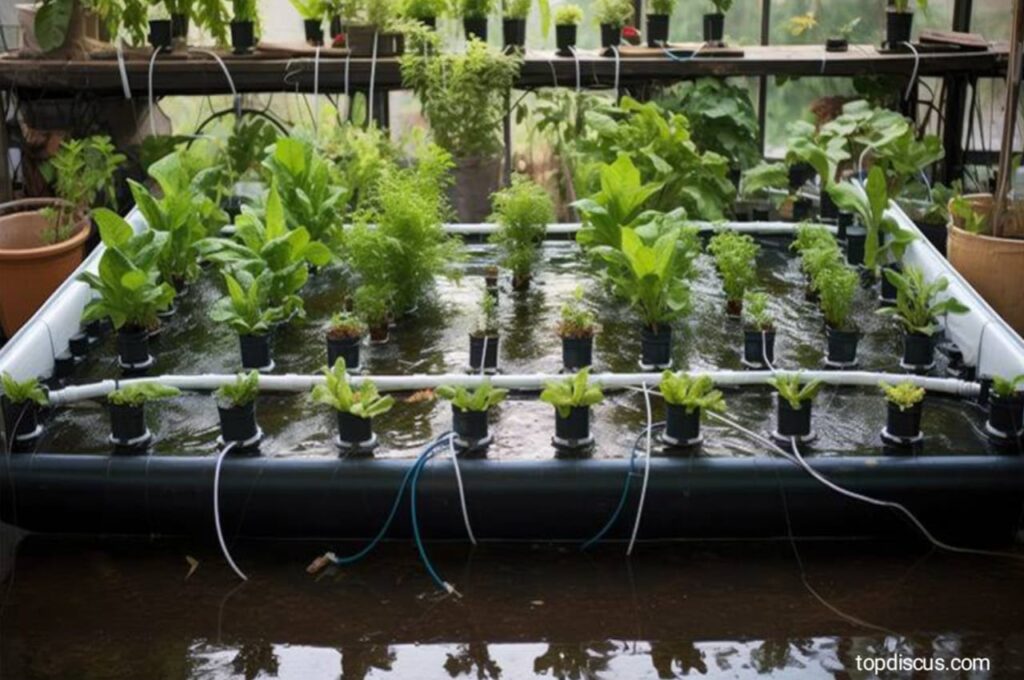
One innovative way to enhance your home fish farming experience is by integrating aquaponics into your setup. Aquaponics combines hydroponics and fish farming, creating a symbiotic relationship between plants and fish. The waste produced by the fish serves as nutrients for the plants, while the plants help filter the water for the fish. Not only does this system maximize productivity in a limited space, but it also provides you with both fresh produce and healthy fish.
2. Vertical Fish Farming:
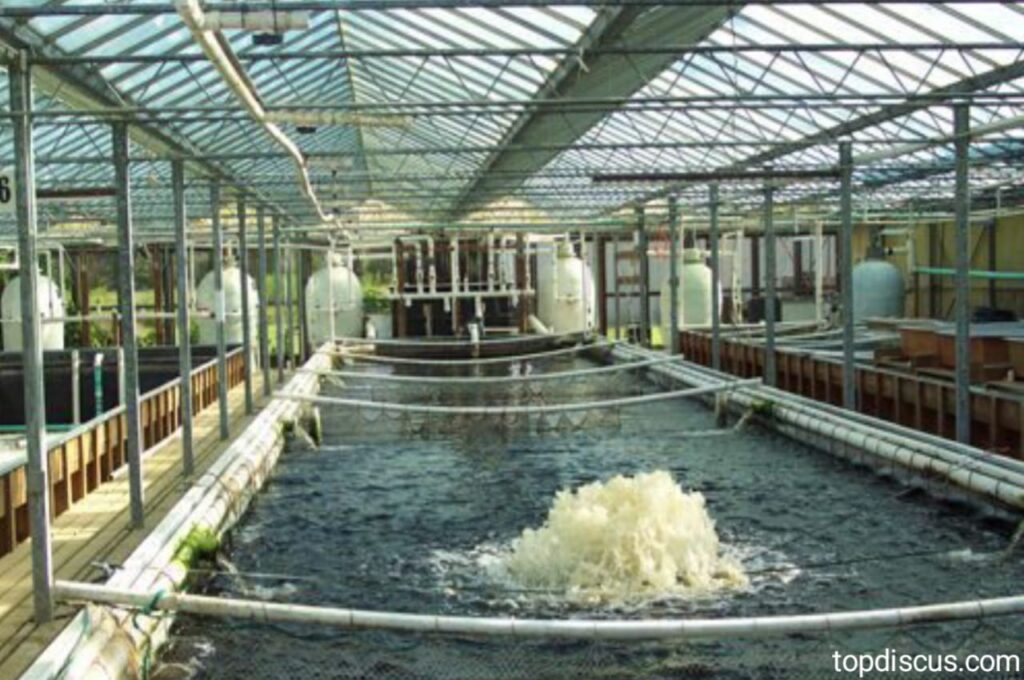
If your home has limited space, consider setting up a vertical fish farming system. This involves stacking tanks or containers vertically to maximize space utilization. Using gravity flow systems or pumps, water can circulate efficiently from one tank to another, ensuring that each tank is adequately oxygenated and filtered.
3. DIY Filtration Systems:
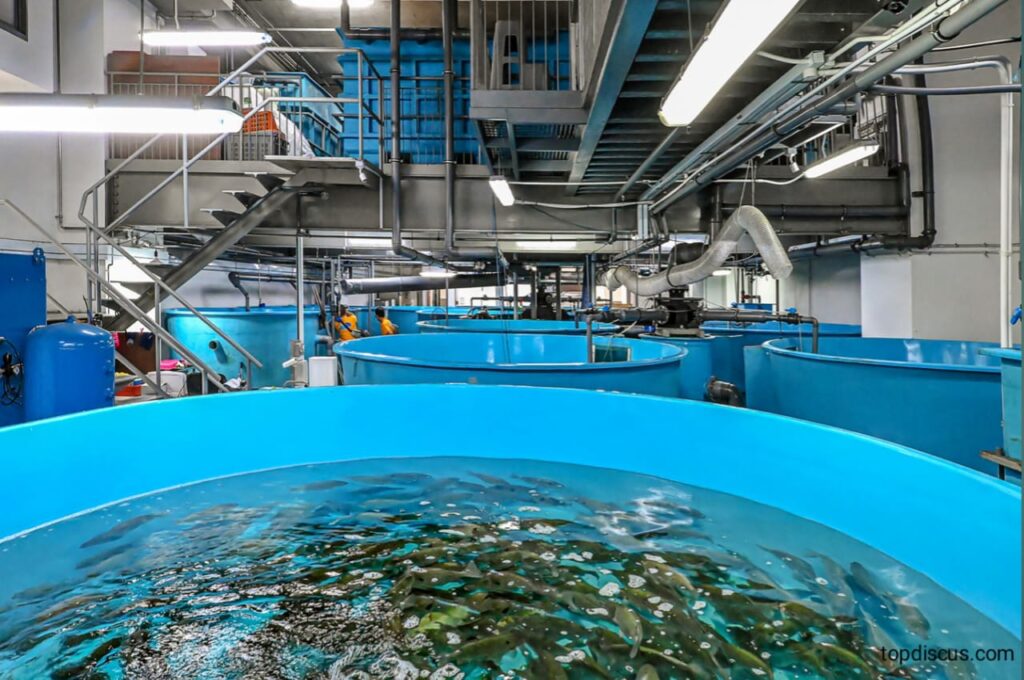
Another creative idea is to design your filtration system using readily available materials such as PVC pipes and media filters. These homemade systems can be cost-effective alternatives to commercial filters while providing effective water purification.
4. Smart Monitoring Technology:

Embrace technology by incorporating smart monitoring devices into your home fish farm setup. These devices allow you to remotely monitor crucial parameters like temperature, pH levels, dissolved oxygen levels, and feed consumption of your fish through mobile apps or online platforms.
5. Indoor Aquaculture Lighting:
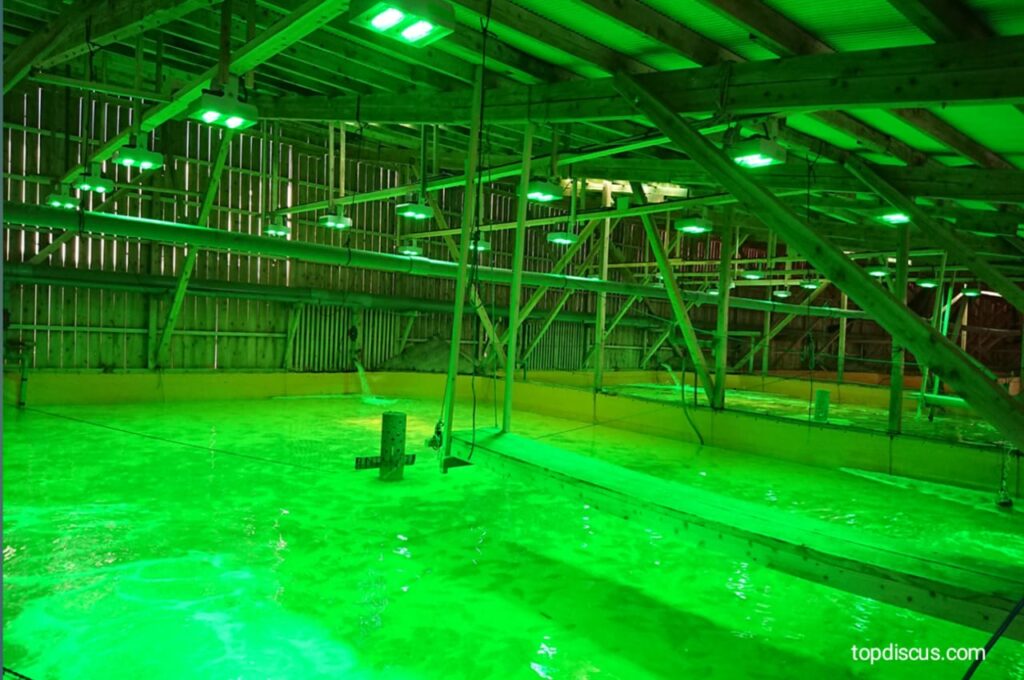
Install specialized LED lights explicitly designed for aquatic environments in your indoor fish farm area to promote optimal growth and reproductive behavior among the fish.
Remember that these ideas are just starting points – feel free to adapt them based on your needs and resources! With some creativity, there are endless possibilities for enhancing your home fish farming experience.
Choosing the Right Type of Fish for Your Farm:
When starting your home fish farm, choosing the right type of fish is crucial for success. There are numerous factors to consider, such as the climate in your area, available resources, and personal preferences. Here are some key points to help you make an exact decision.
Think about the purpose of your fish farm. Are you looking to breed fish for consumption or enjoy them as pets? If it’s for consumption, popular choices include tilapia, catfish, trout, and salmon. These species grow relatively quickly and have high market demand.
Next, consider the environmental conditions necessary for each type of fish. Some fish species thrive in warmer water, while most prefer cooler temperatures. Ensure your chosen fish can adapt well to the climate in your region.
Additionally, consider the space and equipment requirements for each type of fish. Some species require large tanks or ponds with specific filtration systems. Others may be more suitable for smaller-scale setups like aquariums or aquaponics systems.
Don’t forget about maintenance and care considerations. Certain types of fish may require specialized diets or medications to prevent diseases. Researching their dietary needs and potential health issues will ensure a healthy and thriving farm.
By carefully selecting the correct type of fish for your home farm based on these factors, you’ll set yourself up for a successful venture!
Best Practices for a Healthy and Productive Fish Farm:
Maintaining a healthy and productive fish farm requires careful attention to various factors. Here are some best practices to help you succeed in your home fish farming venture.
Water quality is of utmost importance when it comes to the health of your fish. Regularly monitor and maintain proper water parameters such as temperature, pH, and oxygen levels. A well-aerated and filtered tank or pond can go a long way in ensuring optimal conditions for your aquatic friends.
Feeding your fish appropriately is crucial for their growth and overall well-being. Please provide them with a balanced diet that meets their nutritional requirements. Overfeeding should be avoided as it can lead to water pollution and various health issues for the fish.
Regular observation is critical to spotting any disease or stress in your fish. Conduct daily visual inspections, observe their behavior, and watch for abnormalities like color changes or unusual swimming patterns. Prompt action at the first sign of trouble can prevent outbreaks or fatalities.
Maintain good hygiene practices within your fish farm by regularly cleaning tanks or ponds, removing debris, and ensuring proper waste management. Dirty water can harbor harmful bacteria or parasites that may negatively impact the health of your fish.
Preventative measures such as quarantining new additions before introducing them into existing populations can help minimize the risk of spreading diseases among your stock.
Regular water quality monitoring through routine testing is crucial for maintaining optimal conditions within your fish farm. Keep records of these tests to track any fluctuations and make necessary adjustments.
By implementing these best practices, you’ll be on track toward maintaining a healthy environment for your home-based fish farming operation!
For more Information
The Future of Home Fish Farming:
As technology continues to advance rapidly, it is no surprise that the future of home fish farming holds great promise. With innovative solutions and advancements in aquaculture techniques, the possibilities for home fish farming are endless.
One exciting development is the rise of automated systems that make managing a fish farm easier than ever before. These technologies, from automatic feeders to remote monitoring systems, allow fish farmers to keep tabs on their stock and maintain optimal conditions without constant manual intervention.
Furthermore, advancements in genetics research may lead to new breeds of fish designed explicitly for home farming. These genetically modified organisms (GMOs) could exhibit traits such as faster growth rates or increased disease resistance, maximizing productivity and profitability for home fish farmers.
Another area poised for growth is sustainable aquaponics – an integrated system combining both hydroponics and aquaculture. By using waste from farmed fish as nutrients for growing plants, this symbiotic approach results in less water usage and greater resource efficiency overall.
Additionally, with the increasing popularity of urban agriculture and vertical farming concepts, we can expect to see more compact and space-efficient designs explicitly tailored for urban dwellers interested in pursuing home fish farming as a hobby or a source of income.
Conclusion:
Home fish farming is a rewarding and sustainable way to enjoy the benefits of fresh and healthy fish in your backyard. Whether you set up a small aquaponics system, raise tilapia in tanks, or create an outdoor pond for ornamental fish, there are endless possibilities for cultivating your aquatic ecosystem.
By engaging in home fish farming, you can provide nutritious food for yourself and your family and contribute to environmental conservation by reducing reliance on wild-caught seafood. Additionally, this practice allows you to connect with nature and gain a deeper appreciation for aquatic life.
Remember that choosing the right type of fish species is crucial for success. Consider factors such as water temperature requirements, growth rates, feeding habits, and compatibility with other species before deciding. It’s essential to prioritize the health and well-being of your fish through proper nutrition, regularly monitoring water quality parameters like pH levels and ammonia concentrations, and maintaining appropriate filtration systems.
To enhance your home fish farming experience further, get creative! Explore ways to incorporate aesthetic elements into your setup, such as adding live plants or decorative features that mimic natural habitats. You can even consider integrating automated feeding systems or monitoring devices to simplify maintenance tasks.
Looking ahead into the future of home fish farming offers exciting prospects. With technological advancements and increased awareness about sustainable practices, we can expect more innovative solutions like vertical aquaponic towers or mobile recirculating systems that maximize space utilization while minimizing resource consumption.
So why wait? Dive into the world of home fish farming today! Enjoy fresh seafood at arm’s reach while nurturing an eco-friendly hobby that brings joy and satisfaction year-round. Start small if needed, but always strive to create a thriving habitat where you and your finned friends can flourish together!
Embrace this fulfilling journey towards self-sufficiency through sustainable agriculture – one tank at a time!
Happy fishing!
